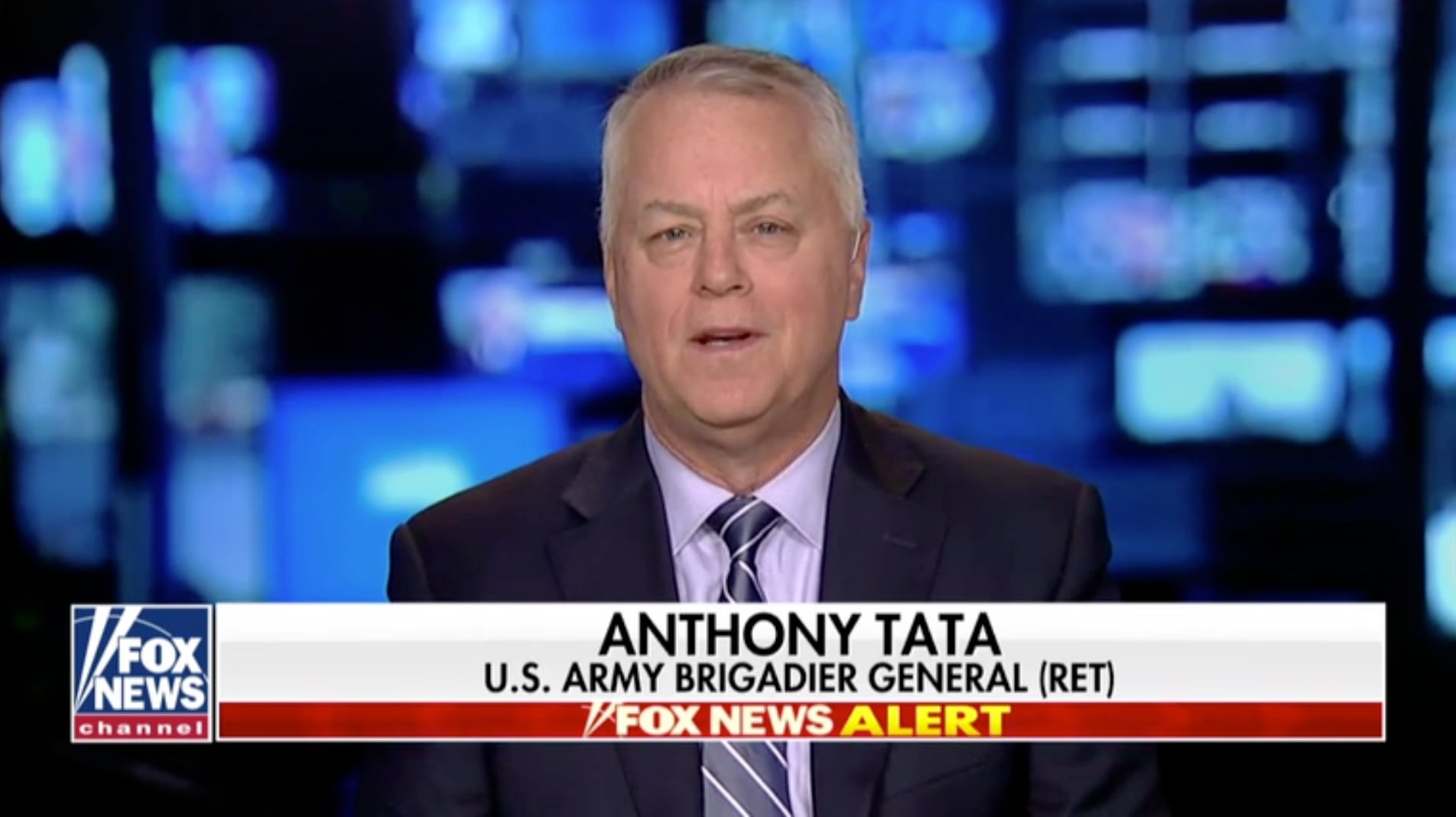A white van was speeding toward a checkpoint manned by U.S. soldiers in Iraq as then-AH-64 Apache attack helicopter pilot, now-Army Chief of Staff Gen. James McConville, was circling above armed with Hellfire missiles.
In the tense moments ahead, troops at the checkpoint would debate whether the van was a threat as it sped down the road, diverting the checkpoint; it certainly was behaving suspiciously.
McConville received the order he was clear to shoot at the van, but instead, he flew right over the van’s roof and turned around to face it. “They were scared, they were a family that’s scared. That vehicle stopped and a family got out,” he said.
That moment has continuously stayed with McConville as he has led the Army, whether it was considering training and readiness of troops or the technology the service develops and adopts — weighing whether a capability could help or hinder in complicated, foggy and tense situations like the one he faced in Iraq.
McConville is preparing to leave the Army, which is focused on modernizing its equipment and formations to face near-peer threats like Russia and China across all land, air, sea, cyber and space. During his tenure, McConville oversaw much of the efforts now slated for delivery in the 2030s, while also managing several difficult years in a pandemic and supplying Ukraine as it fended off Russia.
Already, the service is seeing a rapid injection of new, high-tech weapons and equipment; the Army is aiming to get 24 priority weapons systems into the hands of soldiers by the end of this year.
But the Army is also struggling to recruit new soldiers into its ranks, a problem McConville has sought to address.
Military Times sat down with McConville at the Pentagon just ahead of his Aug. 3 retirement. This interview has been edited for length and clarity.
What are you most proud of, in your time serving and during your tenure as chief?
I’m just real proud of the people. I’ve talked about people first and what I mean by that is what makes the Army is people. I don’t say soldiers first because, first of all, soldiers are extremely important, but if you think about building the team, it’s soldiers from the regular Army, but it’s also the National Guard and Reserve. And then certainly family. We’ve spent a lot of time on quality of life for families, and do we have housing, but we are putting billions of dollars in, and this is a very different Army [in] how we take care of families.
What’s something that you wish you could have accomplished during your time as chief that you didn’t that you are hoping your successor might continue to work toward?
When I look at what we want to deliver, I’ve talked about the 24 [systems in soldiers’ hands] in [20]23. It just takes consistency and persistence to get things done. So, you know, when we look at the modernization effort that’s going on in the United States Army, it really goes back six years, and it goes back to … Gen. [Mark]l Milley, it was Secretary [Ryan] McCarthy and Secretary [Mark] Esper, and I was the vice. … What happened was General Milley and Secretary [Esper], they moved up, we moved up and we had a lot of consistencies. ... The good thing was everyone had the same shared vision. … And we stayed with it as new secretaries came in... fortunately, we were able to convince them and the new administration to stay with it now. You have to prove it every single time. … I’m pleased that we have gotten that going. We’ve downselected on [Future Long Range Assault Aircraft], but we need to field that system, we’ve downselected on the Next Generation Combat Vehicle, we need to field that system, [Future Attack Reconnaissance Aircraft. We can field two aircraft. We’ve done it before, but again, we need to get that done. And those systems, weapon systems, we need to bring to complete fruition. That’s over the next 10 years.
How do you inspire people to join the military when they don’t come from military families?
Recruiting is challenged right now; there’s a lot of reasons for that. But we’ve got to inspire young men and women to serve. And we’ve got to take the politics out of it, which is easier said than done.
At the same time, and we’ve been adamant about it, we haven’t lowered standards. [With the] Future Soldier Prep Course, we want to show America we’re going to invest in your kids and we brought back “Be All You Can Be.” I’m a parent of three kids that serve, and why should my kid go in the Army? To be an “Army of one?” To be “what’s your warrior?” No, because if you go in the Army, you can be all you can be.
As you depart, what is your assessment of the risk the country and DoD is facing with an authorized active Army of 450,000?
It’s like that old saying, “Speak softly and carry a big stick.” If you can’t carry a big stick, you’re gonna carry a sharp stick.
So we want to make sure that we have the most lethal Army we can with the resources we get. It’s really a balance for a chief. Part of that is the people willing to serve and part of that is you’re always wrestling with what are the weapons systems, what’s the training?
You want to be able to make sure that [the] soldiers you have are highly trained, they’re highly resourced, best equipped, best led soldiers we have.
Retention is really good. I think we need to do a better job on recruiting. We had a bad year last year. This year is going to be better. I don’t want to be too optimistic. The trends are in the right direction.
The sergeant major recently spoke out about soldiers under heavy strain due to high operational tempo and limited manpower. Do you share that assessment that soldiers are under heavy strain at the moment?
Yes, I do. And especially Patriot air defenders, and what we’re trying to do is just be smart about how we deploy soldiers. You have two things going, one is units that are on a certain tempo, but it’s also who are the soldiers in the units. And then how do we deploy them? How long do they go for? Can we get the equipment over there? And maybe they go over at 70% if it’s just training. … How do you get agility, so if you have the equipment over there, how can you do that very quickly? We are watching the op tempo and our soldiers. On the other hand, our soldiers do want to deploy.
Turning to artificial intelligence, it has a lot of benefits for the military. But what concerns you about AI when it comes to a potential war in which both sides are equipped with that technology?
My concern about AI is AI does not have morals. It doesn’t really think, it doesn’t feel. And I believe there should be a person in the loop in most decisions. It doesn’t mean in every part of the decision. But, the idea that we’re going to have machines fighting machines, and there’s no people involved, that is very dangerous.
My experience has been sometimes AI can go horribly wrong because you start getting into targeting and depending how things can happen, who is responsible when AI does the targeting, they do the shooting, and you put a missile into a van with a family? Who owns that? That’s where I have some challenges with it.
The war in Ukraine highlights needs that will be hard for the Army to address given recent recruiting challenges and flat budgets, such as the Army’s requirement for more air and missile defense battalions and systems and more robust electronic warfare capability. How are you thinking about that?
We’re going to have to do it and what we’ve done on the personnel side is we’ve done personnel night court. Basically that’s the way we were able to modernize on a flat budget.
We’ve got to have air and missile defense, we recognize that we have to have EW, we recognize that we have to have long-range precision fires, we recognize we’re building five Multidomain Task Forces, we recognize that we’re fielding Mobile Protected Firepower. ... There are some other organizations that may grow, then you’re going to have unmanned organizations.
During your time in combat, do you have a particular memory or something that stands out to you that has affected how you have led?
We were in [Afghanistan] and we got a mission to basically take out improvised explosive devices that were in three intersections. They were getting ready to do an attack down this road. And it was a very challenging, difficult mission. I was [one of] three [helicopters].
I was in an [OH-58] Kiowa Warrior [scout helicopter], and was asked, ‘Can you guys do this?” [I said], ‘Give me a couple minutes.” And I talked to the crews and said, “OK, here’s what we’re gonna do, we’re gonna actually rehearse this in combat,” which is really unusual. We’d never quite done something like this.
I said “OK, first aircraft, you’ll take the first intersection, second one with the second, and what I want you to do is we’re gonna fly through them. And go ahead and put it in your computer system, make sure you know what it looks like and then the next time we go, now we’re gonna practice engagement.” … Then we go, we’re ready. And then we did it, it worked out really good. ... A lot of times, sometimes going slower actually means going fast. And it means getting it right. A lot of people rush into failure and you don’t want to rush into failure and you always want to practice.
Jen Judson is an award-winning journalist covering land warfare for Defense News. She has also worked for Politico and Inside Defense. She holds a Master of Science degree in journalism from Boston University and a Bachelor of Arts degree from Kenyon College.





